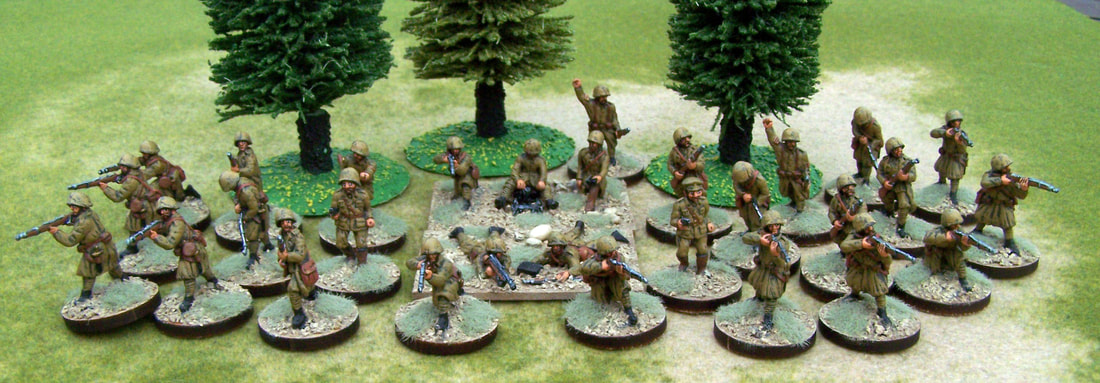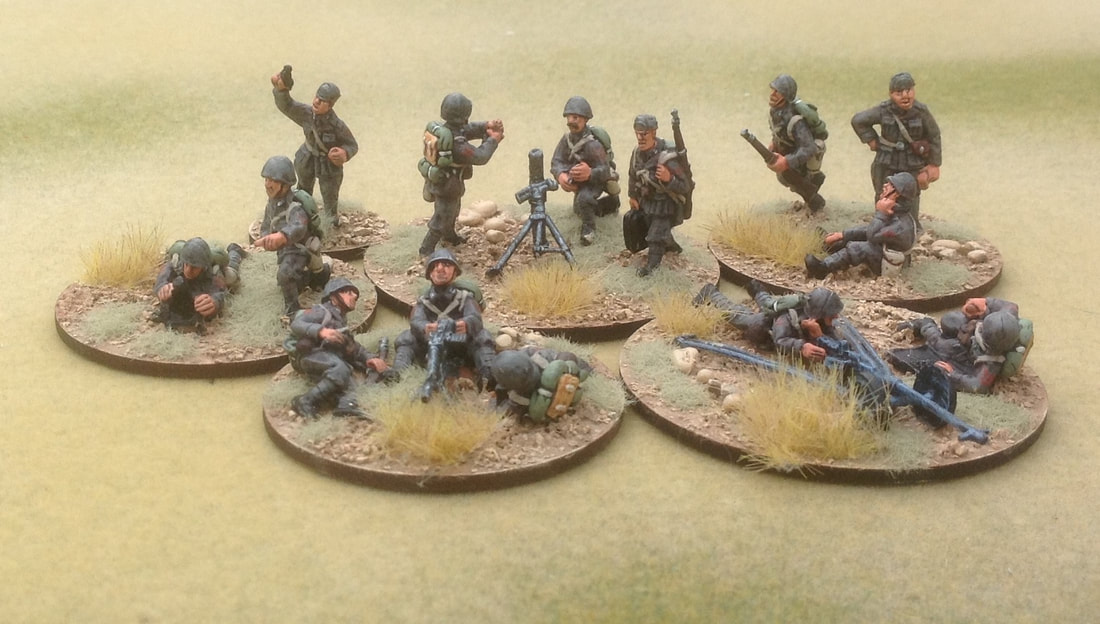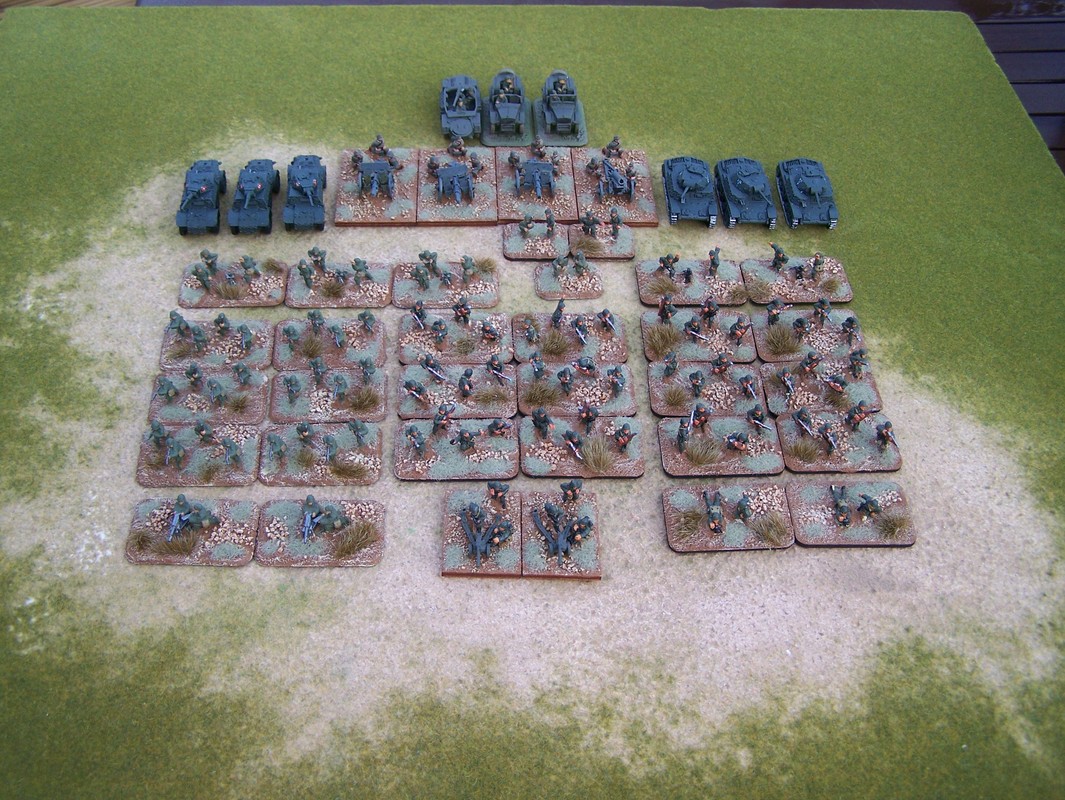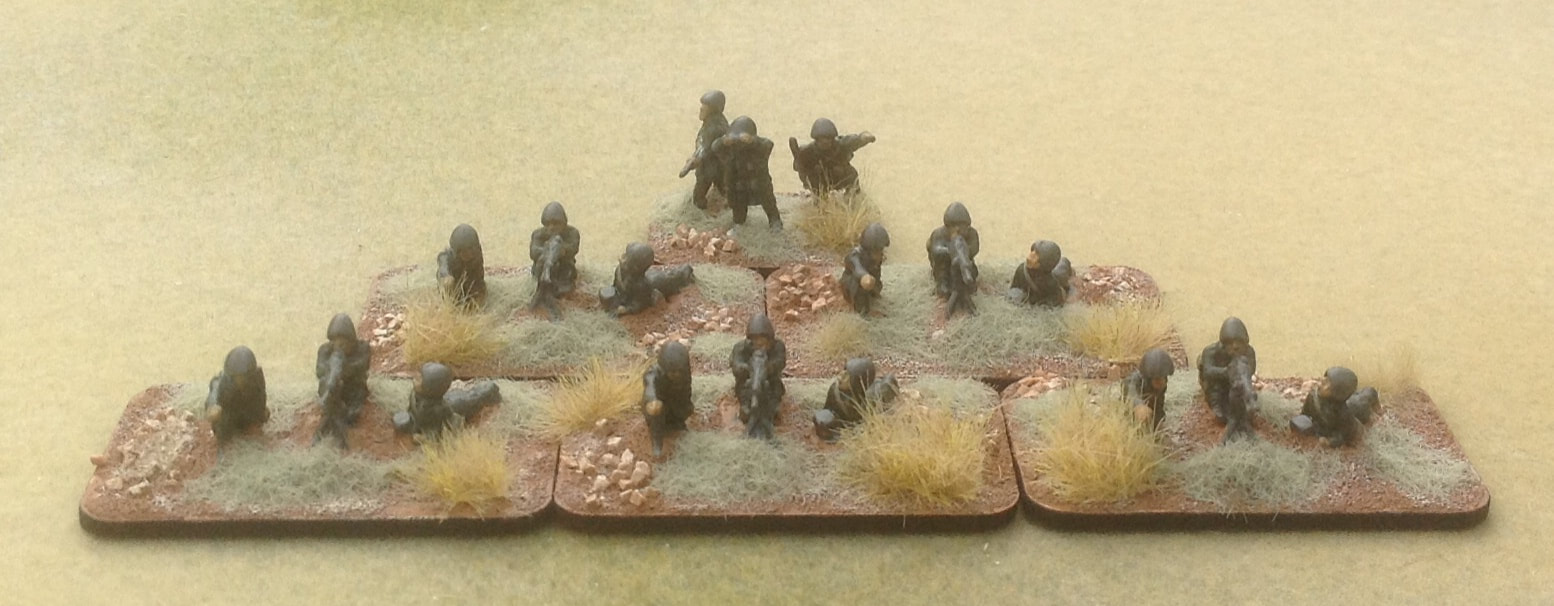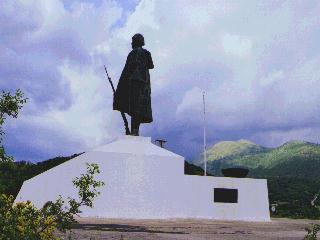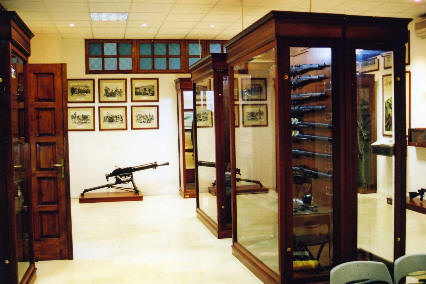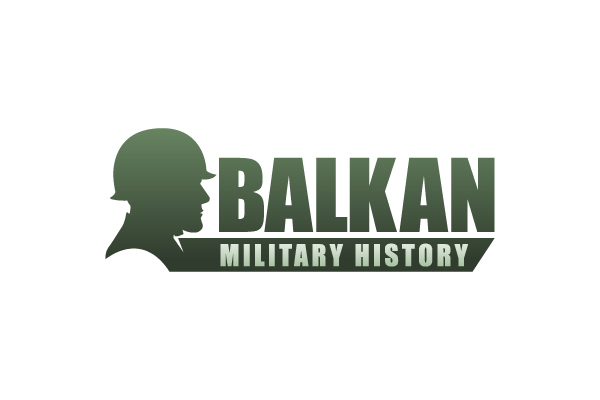- Home
- About
-
Travel
-
Features
- Dyrrachion1081
- Normans in the Balkans
- Manolada 1316
- Kosovo 1389
- Castles on the Danube
- Late Medieval Bosnian Army
- Doboj 1415
- Wallachian and Moldovan troops of the Napoleonic wars
- Anchialos 917
- Slovenian Borderlands
- The Zadruga and the Military Border
- Cretan War in the Adriatic
- Salonika 1916
- Uskoks of Senj
- Siege of Klis 1537
- Eugene in the Balkans
- Moldavian Surprise 1711
- Austro-Turkish War 1737-9
- Militargrenze
- Invading Ottoman Turkey
- Siege of Ragusa 1814
- Russo-Turkish War 1806-12
- Serbian Uprising 1815
- Ali Pasha
- Ottoman Army 1826
- Aleksinac 1876
- Shipka Pass
- Slivnitsa 1885
- Romanian Army 1878
- Austrian forts 19thC
- Kumanovo 1912
- Catalca Lines
- Adrianople 1912-13
- Kajmakcalan 1916
- The other 1918 campaign
- Macedonia air war WW1
- War of the Stray Dog
- Royal Yugoslavian armed forces
- Blunder in the Mountains
- Romanian SS
- Gebirgsjager in the Balkans
- Knights Move 1944
- Vis during WW2
- HLI in the Adriatic
- Adriatic Cruel Seas
- Dalmatian Bridgehead
- Cyprus 1974
- Transnistrian War
- Ottoman Navy Napoleonic wars
- Medieval Balkans
- Balkan lockdown quiz >
- Reviews
-
Armies
- Ancient Greeks
- Pyrrhic army of Epirus
- Dacian wars
- Goths
- Late Roman
- Comnenan Byzantine Army
- Normans
- Serbian medieval
- Albanian medieval
- Wallachian medieval
- Bosnian Medieval
- Catalan Company
- Polish 17C
- Austrian Imperialist
- Ottoman
- Austrian 18thC
- Russian Early 18thC
- Ottoman Napoleonic
- Greek Revolution
- 1848 Hungarian Revolution
- Russian Crimean war
- Romanian Army of 1877
- Ottoman 1877
- Russian 1877
- Balkan Wars 1912-13
- Macedonia WW1
- Greece WW2
- Italian Army WW2
- Gebirgsjager WW2
- Hungary WW2
- Turkey WW2
- Soviet Union WW2
- Bulgaria WW2
- Turkish Korean War Brigade
- Balkan Wars 1990s
- Links
- Books
Blunder in the Mountains
The Italian Invasion of Greece 1940
Introduction
The Italian invasion of Greece in October 1940 was one of Mussolini’s major wartime disasters. A totally inadequate Italian army blundered into the mountains of north-west Greece, where it was defeated, thrown back into Albania, only to be rescued by the German invasion of Greece the following year. The common perception of this campaign is of a massive Italian army being held off by valiant, outnumbered Greek forces. Valiant they certainly were, however, as I will demonstrate the opposing forces were actually fairly evenly balanced.
The campaign offers an interesting alternative to the usual WW2 armoured encounters. The rugged terrain and limited forces can be reproduced effectively on the tabletop and even the strategic campaign can be enlivened with a few historical ‘what-ifs’.
The Road to War
War with Greece in 1940 was far from inevitable. Whilst King George and sections of the Greek political elite had anglophile tendencies, Greece was led by General Metaxas, a dictator who had far more in common with the Axis leaders than the western democracies. It was the policy of Mussolini and his pro-Albanian clique including Foreign Minister, Count Ciano, Jacomoni, governor-general of Albania and the commanding general, Visconti Prasca which drove Italy to war with Greece.
Hitler’s strategic plans required that the Balkans remain quiet. In the summer of 1940 German troops had secured the Rumanian oilfields, Bulgaria was pro-German and the Yugoslavian Prince Regent supported the axis. Even Turkish neutrality was being undermined. Yet it had been agreed that the Balkans would be in Mussolini’s sphere of interest and the Italian dictator was jealous of Hitler’s success. The complex diplomatic moves and political machinations of the Italian leadership are beyond the scope of this article. However, in the final analysis it was Mussolini who sanctioned the invasion, without advising his ally Hitler until after the invasion had begun.
The War Plans
The original Italian plan (known as Contingency G) was a limited territorial expansion into the Epirus region for which the nine Italian divisions in Albania were deemed sufficient. However, this was expanded in a second phase to the total occupation of Greece at a meeting only two weeks before the invasion at which the naval and air force chiefs were not even present. The Chief of the General Staff, Marshall Badoglio, who had previously indicated muted objections to the war, argued that 20 divisions would be required. Visconti Prasca asked for only three extra mountain divisions and some support units. Even these were to be fed in when the initial objectives had been achieved. His motives for refusing reinforcements can only be a matter for speculation. However, the fact that a more senior general might command a larger army, probably influenced his thinking.
For such a modest army to be successful required several favourable factors including; strategic and tactical surprise; a supporting invasion by Bulgarian forces; diversionary attacks on the poorly defended mainland; massive air support; and treachery in the Greek armed forces.
Unfortunately for the Italians the Greeks knew the approximate date of the invasion and King Boris of Bulgaria declined Mussolini’s invitation to participate. This meant the Greek army was well established in the invasion area with the possibility of shifting reinforcements when Bulgarian neutrality became clear. No diversionary attacks were planned (even the island attacks were called off at the last moment) and a winter offensive coupled with negligible air planning minimised the value of Italian air superiority. Despite optimistic views expressed by commanders in Albania and substantial investment in bribes, there was no evidence that Greek forces would collapse due to internal dissent.
The Greek operational plan was very simple. It consisted of two lines using the natural defensive features of the rivers and mountain ranges. In Epirus the army was to follow the principle of elastic defence avoiding major losses. In Macedonia the first line was to be used as a platform for an offensive onto the Koritsa plateau.
The Italian invasion of Greece in October 1940 was one of Mussolini’s major wartime disasters. A totally inadequate Italian army blundered into the mountains of north-west Greece, where it was defeated, thrown back into Albania, only to be rescued by the German invasion of Greece the following year. The common perception of this campaign is of a massive Italian army being held off by valiant, outnumbered Greek forces. Valiant they certainly were, however, as I will demonstrate the opposing forces were actually fairly evenly balanced.
The campaign offers an interesting alternative to the usual WW2 armoured encounters. The rugged terrain and limited forces can be reproduced effectively on the tabletop and even the strategic campaign can be enlivened with a few historical ‘what-ifs’.
The Road to War
War with Greece in 1940 was far from inevitable. Whilst King George and sections of the Greek political elite had anglophile tendencies, Greece was led by General Metaxas, a dictator who had far more in common with the Axis leaders than the western democracies. It was the policy of Mussolini and his pro-Albanian clique including Foreign Minister, Count Ciano, Jacomoni, governor-general of Albania and the commanding general, Visconti Prasca which drove Italy to war with Greece.
Hitler’s strategic plans required that the Balkans remain quiet. In the summer of 1940 German troops had secured the Rumanian oilfields, Bulgaria was pro-German and the Yugoslavian Prince Regent supported the axis. Even Turkish neutrality was being undermined. Yet it had been agreed that the Balkans would be in Mussolini’s sphere of interest and the Italian dictator was jealous of Hitler’s success. The complex diplomatic moves and political machinations of the Italian leadership are beyond the scope of this article. However, in the final analysis it was Mussolini who sanctioned the invasion, without advising his ally Hitler until after the invasion had begun.
The War Plans
The original Italian plan (known as Contingency G) was a limited territorial expansion into the Epirus region for which the nine Italian divisions in Albania were deemed sufficient. However, this was expanded in a second phase to the total occupation of Greece at a meeting only two weeks before the invasion at which the naval and air force chiefs were not even present. The Chief of the General Staff, Marshall Badoglio, who had previously indicated muted objections to the war, argued that 20 divisions would be required. Visconti Prasca asked for only three extra mountain divisions and some support units. Even these were to be fed in when the initial objectives had been achieved. His motives for refusing reinforcements can only be a matter for speculation. However, the fact that a more senior general might command a larger army, probably influenced his thinking.
For such a modest army to be successful required several favourable factors including; strategic and tactical surprise; a supporting invasion by Bulgarian forces; diversionary attacks on the poorly defended mainland; massive air support; and treachery in the Greek armed forces.
Unfortunately for the Italians the Greeks knew the approximate date of the invasion and King Boris of Bulgaria declined Mussolini’s invitation to participate. This meant the Greek army was well established in the invasion area with the possibility of shifting reinforcements when Bulgarian neutrality became clear. No diversionary attacks were planned (even the island attacks were called off at the last moment) and a winter offensive coupled with negligible air planning minimised the value of Italian air superiority. Despite optimistic views expressed by commanders in Albania and substantial investment in bribes, there was no evidence that Greek forces would collapse due to internal dissent.
The Greek operational plan was very simple. It consisted of two lines using the natural defensive features of the rivers and mountain ranges. In Epirus the army was to follow the principle of elastic defence avoiding major losses. In Macedonia the first line was to be used as a platform for an offensive onto the Koritsa plateau.
Order of Battle
There are conflicting sources on the precise OOB for this campaign and both sides had sound if different reasons to exaggerate the size of Italian forces. The Greeks to talk up the extent of their victory and Prasca to cover up his recklessness.
Italian Army (CinC Visconti Prasca)
Julia Alpini Division (Pindus Front)– 10800 men & 20 guns
Littoral Group (coast) (Two cavalry regs. and one reg. of Grenadiers) 4823 men & 32 guns
Arezzo Infantry Division (Yugoslav Front) – 12000 men & 32 guns
Venezia Infantry Division (Marching from Yugoslav front to XXVI Corps) 10000 men & 40 guns
Tsamouria Corps (General Carlo Rossi) (Epirus Front)
Ferrara Infantry Division – 12785 men & 60 guns +3500 Albanians
Siena Infantry Division – 9200 men & 50 guns
Centauro Armoured Division – 4037 men & 24 guns + 163 light tanks (90 serviceable)
XXVI Corps (General Gabriele Nasci) (Macedonian Front)
Parma Infantry Division – 12000 men & 60 guns
Piemonte Infantry Division – 9300 men & 32 guns
The Italian Corps were only established four days before the invasion.
Greek Army (CinC General Papagos)
Epirus Front – 8th Division + Inf. Brig. – 15 battalions & 66 guns
Pindus Front – 3 reinforced battalions & 6 guns
Macedonian Front – 9th Division + 4th Inf. Brig. – 22 battalions & 90 guns
The Greek second line had a further seven battalions in position.
Italian ‘standard’ divisional organisation in 1940 was 2 (3 btn.) regiments usually with 2 Blackshirt battalions attached. Greek divisions had 3 (3 btn.) regiments. Artillery support was similar with 9 batteries. The Italians were better provided with light mortars and the Greeks had more MGs. Both the Italian and Greek divisions had limited AA and ATG provision. Supply services were poor on both sides although this was more vital to the Italians who had only 107 lorries in Albania out of an estimated requirement of 1,750.
In the air, the Italian Air force in Albania had 55 bombers and 107 fighters (more than half CR42 & 32’s). They could also count on support from Brindisi in the form of 119 bombers, 20 JU87’s and 54 fighters. The tiny Greek air force had only 27 bombers and 38 fighters serviceable. However, Italian air-ground co-operation was negligible with the Albania air commander, General Ranza being based in Tirana, many miles from army HQ. The supporting squadrons in Italy were not even in telephone contact.
Whilst exact comparisons are difficult even the Greek official history admitted local superiority on the Macedonian front. There was a modest Italian superiority on the Pindus and Epirus fronts. The main advantage on these fronts lay with tanks and aircraft, neither of which could be used to great effect. This meant that far from the two to one advantage Visconte Prasca thought he had, the opposing forces were fairly evenly balanced with around 150,000 Greeks facing 162,000 Italians. This was even before morale, supply and organisation are considered.
There are conflicting sources on the precise OOB for this campaign and both sides had sound if different reasons to exaggerate the size of Italian forces. The Greeks to talk up the extent of their victory and Prasca to cover up his recklessness.
Italian Army (CinC Visconti Prasca)
Julia Alpini Division (Pindus Front)– 10800 men & 20 guns
Littoral Group (coast) (Two cavalry regs. and one reg. of Grenadiers) 4823 men & 32 guns
Arezzo Infantry Division (Yugoslav Front) – 12000 men & 32 guns
Venezia Infantry Division (Marching from Yugoslav front to XXVI Corps) 10000 men & 40 guns
Tsamouria Corps (General Carlo Rossi) (Epirus Front)
Ferrara Infantry Division – 12785 men & 60 guns +3500 Albanians
Siena Infantry Division – 9200 men & 50 guns
Centauro Armoured Division – 4037 men & 24 guns + 163 light tanks (90 serviceable)
XXVI Corps (General Gabriele Nasci) (Macedonian Front)
Parma Infantry Division – 12000 men & 60 guns
Piemonte Infantry Division – 9300 men & 32 guns
The Italian Corps were only established four days before the invasion.
Greek Army (CinC General Papagos)
Epirus Front – 8th Division + Inf. Brig. – 15 battalions & 66 guns
Pindus Front – 3 reinforced battalions & 6 guns
Macedonian Front – 9th Division + 4th Inf. Brig. – 22 battalions & 90 guns
The Greek second line had a further seven battalions in position.
Italian ‘standard’ divisional organisation in 1940 was 2 (3 btn.) regiments usually with 2 Blackshirt battalions attached. Greek divisions had 3 (3 btn.) regiments. Artillery support was similar with 9 batteries. The Italians were better provided with light mortars and the Greeks had more MGs. Both the Italian and Greek divisions had limited AA and ATG provision. Supply services were poor on both sides although this was more vital to the Italians who had only 107 lorries in Albania out of an estimated requirement of 1,750.
In the air, the Italian Air force in Albania had 55 bombers and 107 fighters (more than half CR42 & 32’s). They could also count on support from Brindisi in the form of 119 bombers, 20 JU87’s and 54 fighters. The tiny Greek air force had only 27 bombers and 38 fighters serviceable. However, Italian air-ground co-operation was negligible with the Albania air commander, General Ranza being based in Tirana, many miles from army HQ. The supporting squadrons in Italy were not even in telephone contact.
Whilst exact comparisons are difficult even the Greek official history admitted local superiority on the Macedonian front. There was a modest Italian superiority on the Pindus and Epirus fronts. The main advantage on these fronts lay with tanks and aircraft, neither of which could be used to great effect. This meant that far from the two to one advantage Visconte Prasca thought he had, the opposing forces were fairly evenly balanced with around 150,000 Greeks facing 162,000 Italians. This was even before morale, supply and organisation are considered.
The Campaign
The Italian offensive was launched on 28 October in driving rain that deprived the army of air cover. The Littoral group moved slowly down the coast while the Tsamouria Corps advanced through the mountains towards Kalpaki. On their left the Julia Alpini Division split into two regimental battle groups either side of Mount Smolikas with the objective of seizing the Metsovon pass. In Macedonia the XXVI Corps (primarily the Parma Division) was thinly spread in defensive positions.
Rapidly rising rivers and mud tracks resulted in slow progress with Greek screening forces falling back onto prepared positions. Despite the difficulties the Aosta Lancers in the Littoral Group gained a bridgehead over the Kalamas River. The Tsamouria Corps made slow progress on what were little more than mountain tracks with the Centauro’s tanks simply sticking in the mud where they had to be abandoned. The Julia Division in the centre began to create a wedge in the Greek position despite the conditions and Papagos responded with infiltration attacks that almost surrounded the Italians. Bersaglieri reinforcements helped extricate the Division only after heavy losses.
On 6 November the Italian command was reorganised into two armies:
9th Army
Piemonte, Arezzo, Parma and Venezia Divisions in Western Macedonia.
Julia and Bari (diverted from cancelled Corfu attack) Divisions on the Pindus.
Tridentia Alpini Division in reserve.
11th Army
Ferrara, Centauro and Siena Divisions
To be reinforced by four divisions in preparation for an offensive after 5 December.
General Soddu subsequently replaced Visconte Prasca.
With the Italian offensive grinding to a halt Papagos shifted the 10th and 15th Divisions to the Macedonian front to join the 9th Division (III Corps). The Italians had dug in on the Devoli River with their backs to the Morava massif. 15th Division in the north made spectacular advances in freezing conditions around Mount Ivan whilst 9th & 10th Divisions pushed the Italians back off the mountains exposing the key valley town of Koritsa which was abandoned on the 21 November.
Italian reinforcements where thrown into the line piecemeal often without supporting arms and into a chaotic command structure. The loss of Koritisa and Erseke exposed the left flank of the 11th Army on the coast which was forced to retreat deep into Albania whilst being vigorously counterattacked by fresh Greek divisions. By 10 January the Klisura junction had been captured and Italian units only managed to stabilise the line south of the port of Vlone. Even this was due more to the lengthening Greek supply lines than effective Italian resistance. Marshall Cavallero replaced General Soddu.
The Greek strategy was now to capture Vlone then stabilise the line so that divisions could be redeployed to the Bulgarian front. It was becoming increasingly obvious that a German invasion was likely. The assault supported by RAF squadrons made some progress but ground to a halt in bad weather.
The Italians again reinforced up to a total of 28 divisions(4 Alpine, 1 Armoured and 23 Infantry) totalling 526,000 men. On 9 March their spring offensive used seven divisions in a limited attack between the Vijose River and Mount Tommorit. The 14 Greek divisions holding the Albanian front gave some ground until the attack was called off on 19 March after heavy casualties on both sides. This remained the position until April when the German invasion of the Balkans moved through the Pindus capturing Ioannina, sealing the Greek army in Albania.
The Italian offensive was launched on 28 October in driving rain that deprived the army of air cover. The Littoral group moved slowly down the coast while the Tsamouria Corps advanced through the mountains towards Kalpaki. On their left the Julia Alpini Division split into two regimental battle groups either side of Mount Smolikas with the objective of seizing the Metsovon pass. In Macedonia the XXVI Corps (primarily the Parma Division) was thinly spread in defensive positions.
Rapidly rising rivers and mud tracks resulted in slow progress with Greek screening forces falling back onto prepared positions. Despite the difficulties the Aosta Lancers in the Littoral Group gained a bridgehead over the Kalamas River. The Tsamouria Corps made slow progress on what were little more than mountain tracks with the Centauro’s tanks simply sticking in the mud where they had to be abandoned. The Julia Division in the centre began to create a wedge in the Greek position despite the conditions and Papagos responded with infiltration attacks that almost surrounded the Italians. Bersaglieri reinforcements helped extricate the Division only after heavy losses.
On 6 November the Italian command was reorganised into two armies:
9th Army
Piemonte, Arezzo, Parma and Venezia Divisions in Western Macedonia.
Julia and Bari (diverted from cancelled Corfu attack) Divisions on the Pindus.
Tridentia Alpini Division in reserve.
11th Army
Ferrara, Centauro and Siena Divisions
To be reinforced by four divisions in preparation for an offensive after 5 December.
General Soddu subsequently replaced Visconte Prasca.
With the Italian offensive grinding to a halt Papagos shifted the 10th and 15th Divisions to the Macedonian front to join the 9th Division (III Corps). The Italians had dug in on the Devoli River with their backs to the Morava massif. 15th Division in the north made spectacular advances in freezing conditions around Mount Ivan whilst 9th & 10th Divisions pushed the Italians back off the mountains exposing the key valley town of Koritsa which was abandoned on the 21 November.
Italian reinforcements where thrown into the line piecemeal often without supporting arms and into a chaotic command structure. The loss of Koritisa and Erseke exposed the left flank of the 11th Army on the coast which was forced to retreat deep into Albania whilst being vigorously counterattacked by fresh Greek divisions. By 10 January the Klisura junction had been captured and Italian units only managed to stabilise the line south of the port of Vlone. Even this was due more to the lengthening Greek supply lines than effective Italian resistance. Marshall Cavallero replaced General Soddu.
The Greek strategy was now to capture Vlone then stabilise the line so that divisions could be redeployed to the Bulgarian front. It was becoming increasingly obvious that a German invasion was likely. The assault supported by RAF squadrons made some progress but ground to a halt in bad weather.
The Italians again reinforced up to a total of 28 divisions(4 Alpine, 1 Armoured and 23 Infantry) totalling 526,000 men. On 9 March their spring offensive used seven divisions in a limited attack between the Vijose River and Mount Tommorit. The 14 Greek divisions holding the Albanian front gave some ground until the attack was called off on 19 March after heavy casualties on both sides. This remained the position until April when the German invasion of the Balkans moved through the Pindus capturing Ioannina, sealing the Greek army in Albania.
What If?
Apart from the campaign in Albania there are a number of interesting ‘what-ifs’ including:
- A Bulgarian invasion in conjunction with the Italian October offensive or later. King Boris would probably have agreed if Mussolini had made an earlier approach with Hitler’s backing.
- A Turkish attack on Bulgaria or Greece. Turkish neutrality swung both ways during this stage of the war. (see Frank Weber The Evasive Neutral Missouri Press 1979)
- The involvement of Yugoslavia on either side.
- The earlier arrival of Wilson Force (two Commonwealth divisions and a tank brigade). The Greeks who were afraid of provoking Hitler refused this offer.
- German air and ground troops in Albania. There was a plan to send a mountain division in January 1941. Other support might have included paras and further air support.
Apart from the above it would be interesting to see if the Italian General Staff’s 20 division invasion would have been any more successful.
Conclusion
As Mario Cervi in his excellent account of the war put it “In the Greek campaign the Italian troops were, without any doubt whatever, the worst led troops in the world. They deserved better of their country.”
The Battlefields Today
The main battlefields can easily be reached from the Greek region of Epirus. The editor's trip used small hotels in the mountain villages of Zagoria as a base. To get a real feel for the mountain war take your walking boots and climb up the goat paths that were used to supply the front line. Later this was a centre for resistance against the occupying troops.
Kalpaki was the hinge of the Greek line and has a monument (left) and a small museum. From there you can travel north to the Albanian border, the site of the later battles when the Greek's advanced.
Apart from the campaign in Albania there are a number of interesting ‘what-ifs’ including:
- A Bulgarian invasion in conjunction with the Italian October offensive or later. King Boris would probably have agreed if Mussolini had made an earlier approach with Hitler’s backing.
- A Turkish attack on Bulgaria or Greece. Turkish neutrality swung both ways during this stage of the war. (see Frank Weber The Evasive Neutral Missouri Press 1979)
- The involvement of Yugoslavia on either side.
- The earlier arrival of Wilson Force (two Commonwealth divisions and a tank brigade). The Greeks who were afraid of provoking Hitler refused this offer.
- German air and ground troops in Albania. There was a plan to send a mountain division in January 1941. Other support might have included paras and further air support.
Apart from the above it would be interesting to see if the Italian General Staff’s 20 division invasion would have been any more successful.
Conclusion
As Mario Cervi in his excellent account of the war put it “In the Greek campaign the Italian troops were, without any doubt whatever, the worst led troops in the world. They deserved better of their country.”
The Battlefields Today
The main battlefields can easily be reached from the Greek region of Epirus. The editor's trip used small hotels in the mountain villages of Zagoria as a base. To get a real feel for the mountain war take your walking boots and climb up the goat paths that were used to supply the front line. Later this was a centre for resistance against the occupying troops.
Kalpaki was the hinge of the Greek line and has a monument (left) and a small museum. From there you can travel north to the Albanian border, the site of the later battles when the Greek's advanced.
Bibliography
Casson, Stanley Greece against the Axis Hamiliton 1941
Cervi, Mario The Hollow Legions Doubleday 1971
Mollo, Andrew The Armed Forces of WW II Orbis 1981
Nafziger, George Italian Order of Battle World War II Nafziger 1996
Packer, Edwin Italian Fiasco: The Attack on Greece Purnell History WW2
Trye, Rex Mussolini’s Soldiers Airlife 1995
Willingham, M Perilous Commitments Spellmount 2006
and a new Osprey on the campaign
An earlier version of this article appeared in the SOTCW Journal.
Casson, Stanley Greece against the Axis Hamiliton 1941
Cervi, Mario The Hollow Legions Doubleday 1971
Mollo, Andrew The Armed Forces of WW II Orbis 1981
Nafziger, George Italian Order of Battle World War II Nafziger 1996
Packer, Edwin Italian Fiasco: The Attack on Greece Purnell History WW2
Trye, Rex Mussolini’s Soldiers Airlife 1995
Willingham, M Perilous Commitments Spellmount 2006
and a new Osprey on the campaign
An earlier version of this article appeared in the SOTCW Journal.
